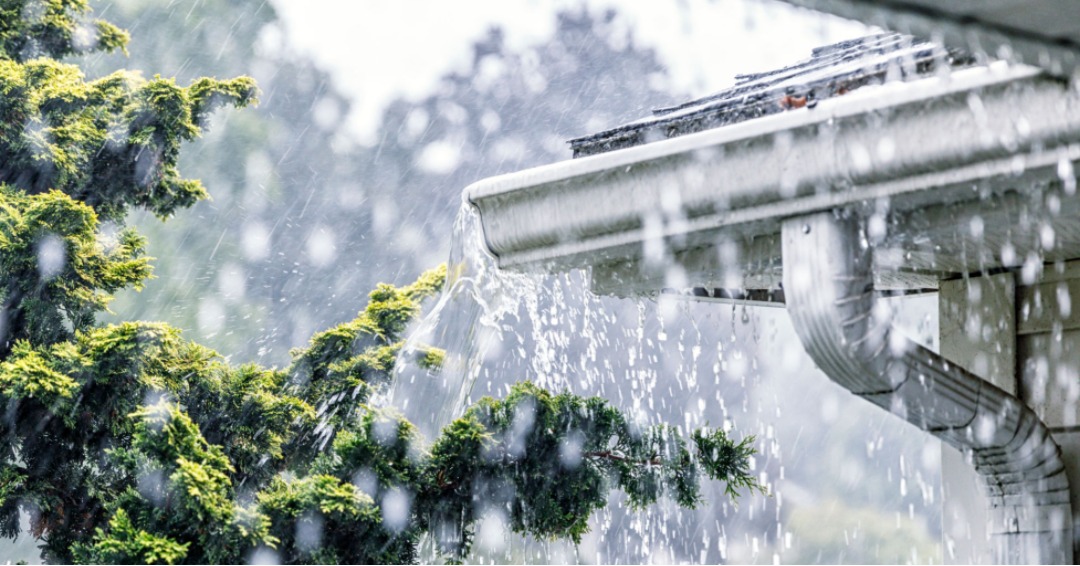Rain gutters play a crucial role in protecting your home from water damage. They channel rainwater away from your roof and foundation, preventing potential problems like leaks, mold growth, and structural issues. However, to ensure their optimal functioning, regular cleaning is essential.
In this article, we will explore the importance of cleaning rain gutters, signs indicating when cleaning is needed, and how often you should clean them.
We will also discuss the options of DIY cleaning versus hiring a professional, provide step-by-step instructions for cleaning rain gutters, and offer tips for maintaining clean gutters.
Introduction
Imagine heavy rainfall hitting your roof. Instead of efficiently diverting water away from your home, your rain gutters are clogged with leaves, twigs, and debris. The overflow cascades down your walls, pooling near your foundation, and potentially causing significant damage. To avoid such scenarios, regular cleaning of your rain gutters is vital.
The Importance of Cleaning Rain Gutters
Rain gutters serve as a protective barrier for your home, collecting rainwater and directing it away from the roof, walls, and foundation. When they are clogged, the water cannot flow freely, leading to overflowing gutters. This overflow can seep into your home, causing water damage, rot, mold, and even compromising the structural integrity of your property. Therefore, keeping your rain gutters clean is essential to maintain a dry and safe home environment.
Signs That Indicate Your Rain Gutters Need Cleaning
Several signs can indicate that your rain gutters are in dire need of cleaning.
Firstly, if you notice water overflowing from the gutters during rainfall or sagging gutters, it’s a clear indication of a blockage.
Additionally, if you observe plants growing in the gutters or detect the presence of pests like birds, rodents, or insects, it suggests a buildup of organic matter and debris.
Finally, water stains or damage on the walls, as well as basement flooding, can be signs that your rain gutters are not functioning properly and require immediate attention.
How Often Should You Clean Your Rain Gutters?
The frequency of cleaning your rain gutters depends on various factors. While there is no one-size-fits-all answer, it is recommended to clean your gutters at least twice a year. However, certain circumstances may require more frequent cleaning.
Let’s explore the factors influencing the cleaning schedule and how seasonal cleaning plays a role.
Factors to Consider
Several factors affect the accumulation of debris in rain gutters. The number and types of trees near your property can significantly impact the frequency of gutter cleaning. If you have tall trees with overhanging branches, leaves and twigs are more likely to fall into the gutters, requiring more frequent cleaning.
Similarly, if your area experiences heavy rainfall or strong winds, the gutters may become clogged more quickly. It’s important to assess these factors to determine the appropriate cleaning frequency for your specific situation.
Seasonal Cleaning
Performing a thorough gutter cleaning at least twice a year is a good rule of thumb. It is advisable to schedule cleanings during spring and autumn.
Spring cleaning helps clear away debris that may have accumulated during the winter months, such as fallen leaves, branches, and other winter debris.
Autumn cleaning is crucial to prepare the gutters for the upcoming winter, as falling leaves and debris can cause blockages and potentially damage the gutters if left unattended. However, depending on your specific circumstances, additional cleaning may be necessary.
DIY vs. Hiring a Professional
When it comes to cleaning rain gutters, you have two options: doing it yourself or hiring a professional. Each option has its own set of pros and cons, and it’s essential to consider them before making a decision.
Pros and Cons of DIY Cleaning
DIY gutter cleaning can be a cost-effective option, especially if you are comfortable working at heights and have the necessary tools. It allows you to have direct control over the cleaning process and may provide a sense of accomplishment.
However, there are drawbacks to consider. Cleaning gutters can be physically demanding and time-consuming. It also involves working on a ladder or roof, which can be dangerous if you lack experience or suffer from a fear of heights. Additionally, you might not have the expertise to spot potential gutter issues that a professional would detect.
Benefits of Hiring a Professional
Hiring a professional gutter service offers several advantages. Firstly, professionals have the experience, tools, and expertise to clean gutters efficiently and safely. They can identify gutter problems early on, potentially saving you from costly repairs in the future.
Professional gutter cleaners are also equipped to handle more complex issues, such as gutter realignment or repairs. Moreover, hiring a professional frees up your time and allows you to focus on other tasks or enjoy your leisure time.
Steps to Clean Rain Gutters
If you choose to clean your rain gutters yourself, follow these step-by-step instructions to ensure an effective and safe cleaning process.
Gather the Necessary Tools
Before starting, gather the required tools and equipment. These typically include a sturdy ladder, work gloves, a trowel or scoop for debris removal, a garden hose with a spray nozzle, and safety goggles. It’s important to have all the tools readily available to avoid unnecessary trips up and down the ladder.
Safety Precautions
Safety should be your top priority when cleaning rain gutters. Make sure the ladder is stable and securely placed on a flat surface. Wear sturdy shoes with good traction, and if possible, have someone assist you by holding the ladder. Consider wearing safety goggles to protect your eyes from debris and gloves to shield your hands from sharp objects or potential allergens.
Clearing Debris
Start by removing larger debris, such as leaves and twigs, from the gutters using a trowel or scoop. Dispose of the debris in a bag or bucket, ensuring not to drop it directly onto your lawn or garden. Clearing the larger debris first will make the flushing process easier.
Flushing the Gutters
After removing the larger debris, use a garden hose with a spray nozzle to flush out the remaining dirt and smaller particles. Begin at the end opposite the downspout and work your way toward it. This ensures that any blockages or obstructions are pushed out of the gutters. Pay attention to the water flow and ensure it is draining properly.
Inspecting and Repairing
While cleaning, inspect the gutters for any signs of damage, such as leaks, rust, or loose connections. Take note of any areas that require repair or further attention. It’s important to address these issues promptly to maintain the functionality and longevity of your rain gutters.
Maintaining Clean Gutters
Keeping your rain gutters clean and well-maintained requires ongoing effort. Here are some tips to help you maintain clean gutters and minimize future blockages.
Regular Inspections
Perform periodic inspections of your gutters to identify any early signs of debris accumulation or damage. Check for loose connections, leaks, or sagging gutters. Timely detection and resolution of these issues can prevent more significant problems down the line.
Gutter Guards and Covers
Consider installing gutter guards or covers to minimize the amount of debris entering the gutters. These protective measures act as a barrier, allowing water to flow while blocking leaves and larger debris. Gutter guards can significantly reduce the frequency of gutter cleaning, but regular inspections and maintenance are still necessary.
Correcting Water Flow Issues
Ensure that the gutters are sloping properly toward the downspouts to facilitate water flow. Adjust the slope by carefully bending the gutter brackets if you notice areas where water is pooling or not draining efficiently. This simple adjustment can prevent water buildup and potential damage.
Trim Overhanging Branches
If you have trees near your property with branches extending over the roof, regularly trim them to minimize the amount of debris falling into the gutters. This proactive measure can significantly reduce the frequency of gutter cleaning.
Cleaning Downspouts
Don’t forget to clean the downspouts as well. Debris can accumulate and cause blockages, hindering proper water drainage. Use a plumber’s snake or a strong stream of water to clear any obstructions from the downspouts.
Conclusion
Regular cleaning of rain gutters is essential to maintain a functional and reliable gutter system. By cleaning your gutters at least twice a year, or more frequently if necessary, you can prevent water damage, protect your home’s foundation, and ensure the longevity of your gutters.
Whether you choose to clean them yourself or hire a professional, proper gutter maintenance is crucial. Additionally, implementing preventive measures, such as gutter guards and covers, and addressing issues promptly can help minimize future problems and save you time and money in the long run.

Gabrielle enjoys writing, exercising, traveling, and meeting new people. She also has a passion for romance novels and smooth lattes.
